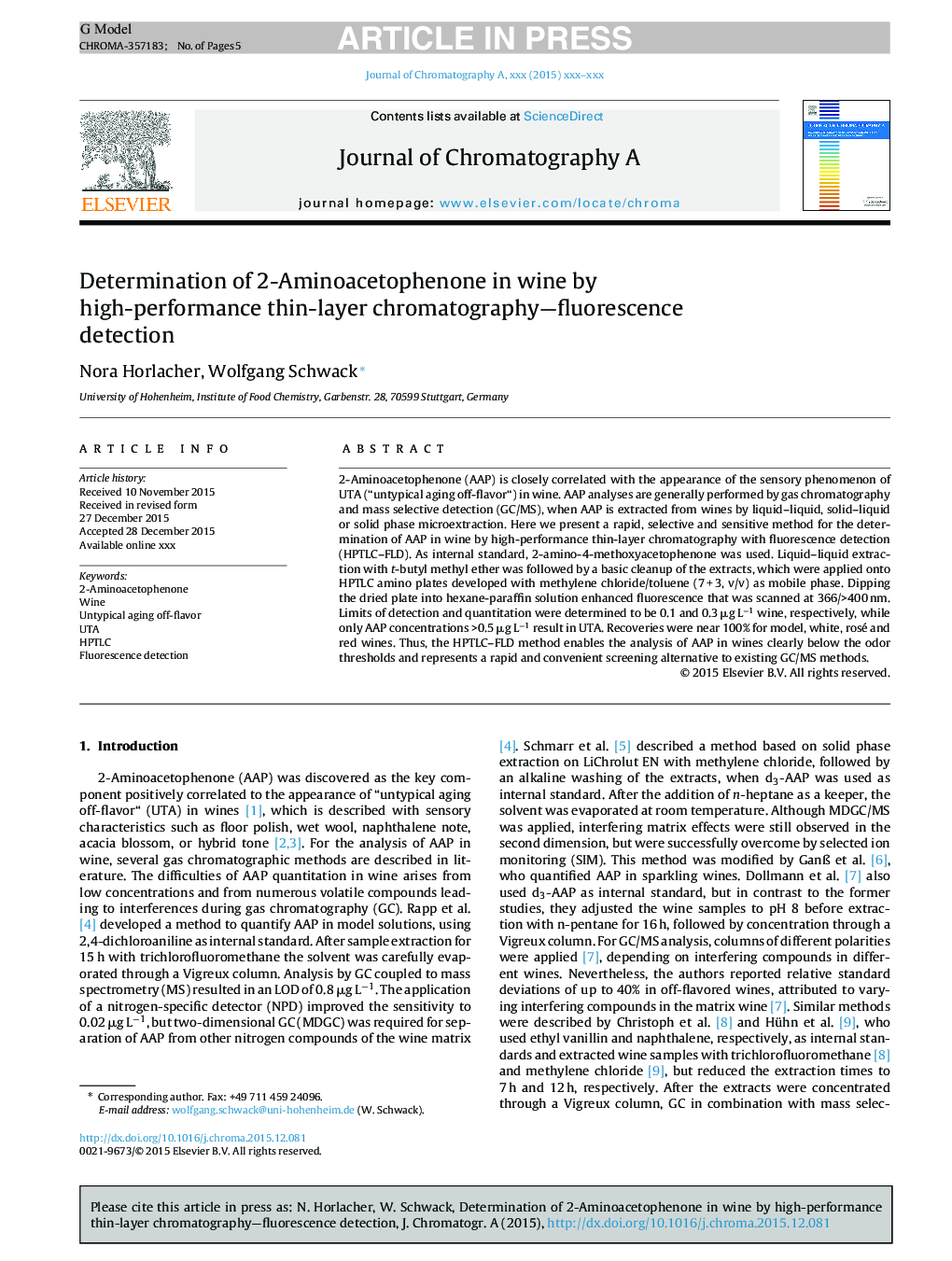| Article ID | Journal | Published Year | Pages | File Type |
|---|---|---|---|---|
| 7610307 | Journal of Chromatography A | 2016 | 5 Pages |
Abstract
2-Aminoacetophenone (AAP) is closely correlated with the appearance of the sensory phenomenon of UTA (âuntypical aging off-flavor“) in wine. AAP analyses are generally performed by gas chromatography and mass selective detection (GC/MS), when AAP is extracted from wines by liquid-liquid, solid-liquid or solid phase microextraction. Here we present a rapid, selective and sensitive method for the determination of AAP in wine by high-performance thin-layer chromatography with fluorescence detection (HPTLC-FLD). As internal standard, 2-amino-4-methoxyacetophenone was used. Liquid-liquid extraction with t-butyl methyl ether was followed by a basic cleanup of the extracts, which were applied onto HPTLC amino plates developed with methylene chloride/toluene (7 + 3, v/v) as mobile phase. Dipping the dried plate into hexane-paraffin solution enhanced fluorescence that was scanned at 366/>400 nm. Limits of detection and quantitation were determined to be 0.1 and 0.3 μg Lâ1 wine, respectively, while only AAP concentrations >0.5 μg Lâ1 result in UTA. Recoveries were near 100% for model, white, rosé and red wines. Thus, the HPTLC-FLD method enables the analysis of AAP in wines clearly below the odor thresholds and represents a rapid and convenient screening alternative to existing GC/MS methods.
Related Topics
Physical Sciences and Engineering
Chemistry
Analytical Chemistry
Authors
Nora Horlacher, Wolfgang Schwack,
